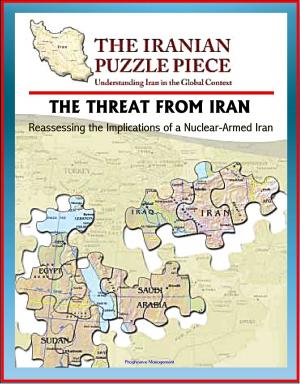Mines Away! The Significance of U.S. Army Air Forces Aerial Minelaying in World War II: Japan's Outer and Inner Zones, AAF Plan and Reality, Operation Starvation Blockade, Navy Subs, Curtis LeMay
Nonfiction, History, Military, Naval, World War II| Author: | Progressive Management | ISBN: | 9781370713578 |
| Publisher: | Progressive Management | Publication: | September 25, 2016 |
| Imprint: | Smashwords Edition | Language: | English |
| Author: | Progressive Management |
| ISBN: | 9781370713578 |
| Publisher: | Progressive Management |
| Publication: | September 25, 2016 |
| Imprint: | Smashwords Edition |
| Language: | English |
This important report has been professionally converted for accurate flowing-text e-book format reproduction. In World War II's Pacific Theater, the U.S. Army Air Forces (AAF) devoted a small percentage of its long-range capability to aerial minelaying against Japanese warships and commerce. Sea mines-explosive underwater devices that damaged, sank, or deterred ships - were weapons that had difficulty gaining the same acceptance as guns, bombs, and torpedoes. Yet, with time, a small number of aerial mining advocates influenced wartime commanders to ensure the growth of minelaying doctrine, equipment development, and combat experience. Ultimately, aerial minelaying became one of the most successful AAF maritime missions of the war and signalled an important role in sea control for the future U.S. Air Force.
The history of mine warfare spanned more than two hundred years, but as an offensive strategy matured only in the twentieth century, hastened by submarine and aircraft delivery. In World War II, the Luftwaffe was first to lay mines from the air and first to field many of the weapon's innovations. The Royal Air Force mounted a significant minelaylng effort in Europe and helped the United States advance its mining in the Pacific. Though slow to start, aerial minelaying in Japan's "Outer Zone" by the air forces of Britain, Australia, and the United States accomplished a worthwhile attrition of Japanese shipping. Finally, in 1945, "Operation Starvation," the aerial mining of Japan's home islands by AAF B-29s, made a dramatic contribution to the blockade of Japan and mines sunk more ships than allied submarines in the war's final months.
Minelaying by the AAF had to overcome the absence of doctrine, serious questions of service autonomy, and preconceptions about naval and air force traditional roles. Though this initially unappreciated weapon gained considerable acceptance during the years of World War II, mines were not again dropped from aircraft in combat until the Vietnam War. During the Cold War, the U.S. Air Force gave little effort to its collateral maritime missions until concern grew over containing an expanding Soviet naval threat. Today, Air Force capabilities for aerial minelaying and other naval missions remain an important (though little appreciated) means for projecting long-range air power in support of "Global Reach--Global Power."
This important report has been professionally converted for accurate flowing-text e-book format reproduction. In World War II's Pacific Theater, the U.S. Army Air Forces (AAF) devoted a small percentage of its long-range capability to aerial minelaying against Japanese warships and commerce. Sea mines-explosive underwater devices that damaged, sank, or deterred ships - were weapons that had difficulty gaining the same acceptance as guns, bombs, and torpedoes. Yet, with time, a small number of aerial mining advocates influenced wartime commanders to ensure the growth of minelaying doctrine, equipment development, and combat experience. Ultimately, aerial minelaying became one of the most successful AAF maritime missions of the war and signalled an important role in sea control for the future U.S. Air Force.
The history of mine warfare spanned more than two hundred years, but as an offensive strategy matured only in the twentieth century, hastened by submarine and aircraft delivery. In World War II, the Luftwaffe was first to lay mines from the air and first to field many of the weapon's innovations. The Royal Air Force mounted a significant minelaylng effort in Europe and helped the United States advance its mining in the Pacific. Though slow to start, aerial minelaying in Japan's "Outer Zone" by the air forces of Britain, Australia, and the United States accomplished a worthwhile attrition of Japanese shipping. Finally, in 1945, "Operation Starvation," the aerial mining of Japan's home islands by AAF B-29s, made a dramatic contribution to the blockade of Japan and mines sunk more ships than allied submarines in the war's final months.
Minelaying by the AAF had to overcome the absence of doctrine, serious questions of service autonomy, and preconceptions about naval and air force traditional roles. Though this initially unappreciated weapon gained considerable acceptance during the years of World War II, mines were not again dropped from aircraft in combat until the Vietnam War. During the Cold War, the U.S. Air Force gave little effort to its collateral maritime missions until concern grew over containing an expanding Soviet naval threat. Today, Air Force capabilities for aerial minelaying and other naval missions remain an important (though little appreciated) means for projecting long-range air power in support of "Global Reach--Global Power."















